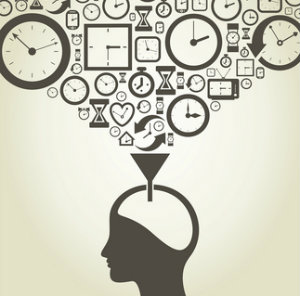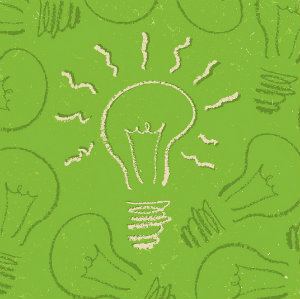3 Brainy Lesson Strategies Boost Student Learning

I may not be a brain expert, but as an educator, I am in the brain business. Like many other teachers out there, I am trying to uncover as much as I can about learning and cognition in order to better understand and serve my students.
That’s why I counted myself lucky when I was asked to teach a night class on adolescent development, cognition, and understanding. Not necessarily because I had so much to say on the subject, but because it gave me a chance to thumb through my old Ed Psych notes, read up on the latest research in cognition, and order a stack of new books with the Amazon gift card that has been sitting in my wallet for 2 years.
What I discovered were a few guiding principles – some new and some already known – that helped fine-tune the design and delivery of my middle school lessons.
Principle 1 – Timing Matters
Our students’ ability to process and retain information depends on a number of factors, one of which is when information is presented. The simple truth is that all of us tend to remember information presented at certain times during a lesson.
For example, try the following activity adapted from Sousa (2012). Find a pencil and a timer set for 12 seconds. Start the timer, then study the following list of 10 number combinations until the timer goes off. Then cover up the list and write down as many of them as you can.
289 1. __________
729 2. __________
561 3. __________
660 4. __________
149 5. __________
268 6. __________
175 7. __________
407 8. __________
913 9. __________
383 10. __________
Chances are that you were able to recall the first several number combinations and last few number combinations, but struggled with the middle ones. This is due to what is known as the primacy-recency effect, or our tendency to best remember what was learned first in a lesson or activity followed by what was learned last (Morrison, Conway, & Chein, 2014).

Primacy-recency also brings into question whether or not the beginning of class should be used for administrivia, such as taking attendance or passing back homework. When it comes to downtime, or the muddled middle section of activities where retention is a little more difficult, teachers should design engaging activities that allow students to practice, discuss, and apply new concepts.
Principle 2 – Relevance Makes Learning Stick
One of the least tapped elements of learning is the affective, or emotional, connection students must make to new concepts and content if knowledge is to be successfully processed, accepted, and retained. Even when concepts do make sense in class, there remains the equally important task of articulating the relevance of what is being learned to students (Assor, Kaplan, & Roth, 2002).
Relevance is a vital component of teaching and learning because it is directly related to student engagement and motivation (Martin & Dowson, 2009). In other words, there are two questions teachers must consistently help their students to answer. The first is, ‘How well do I really understand what is being taught?’ The second: ‘Why should I care about what we are learning?’

As a result, classroom learning is often shortchanged because a teacher fails to clearly establish and communicate the relevance of what is being taught and its applications to the world outside of the classroom. Students who ask, “When am I ever going to use this?” aren’t being disruptive; they are looking for relevance (Roberson, 2013).
Principle 3 – Reducing Concept Confusion
Much of what is learned in schools in interrelated. The difficulty comes when students blur concepts together due to too much similarity or their being taught too closely together.
Think of your own time as a student. In science lessons we examined endergonic and exergonic energy and talked about comets and asteroids. In our language classes we studied adjectives and adverbs, and struggled to apply Spanish words like ‘ser’ and ‘estar.’
In social studies, there were enclaves, exclaves, latitude, and longitude. To this day, every time I hear the words mitosis and meiosis, I get one big, jarbled mental model of chromosomes duplicating, dividing, and realigning. All of these are examples of potential concept confusion, or learner difficulty in understanding and retrieving similar concepts.

I then ask myself if it is possible to teach the concepts at different times. If it is not possible to do so, I always teach the differences first to help students distinguish between the two.
Increasing Our Brain Powers
As teachers, we spend much of our limited time trying to prepare, deliver, and assess the learning of our students. If we really want our students to be successful, however, we must also find time to learn a bit more about their brains and how we can use our new understanding to finagle more learning into them.
We may not be trained neuroscientists, but the better that we grasp and apply principles of cognition, the smoother and deeper our students’ thinking and learning is likely to become.
References
Assor, A., Kaplan, H., & Roth, G. (2002). Choice is good, but relevance is excellent: Autonomy‐enhancing and suppressing teacher behaviours predicting students’ engagement in schoolwork. British Journal of Educational Psychology, 72(2), 261-278. Abstract
Martin, A.J., & Dowson, M. (2009). Interpersonal relationships, motivation, engagement, and achievement: Yields for theory, current issues, and educational practice. Review of Educational Research, 79, 327-365. Abstract
Morrison, A. B., Conway, A. R., & Chein, J. M. (2014). Primacy and recency effects as indices of the focus of attention. Frontiers in human neuroscience, 8. Abstract
Roberson, R., Helping students find relevance, Psychology Teacher Network (September 2013).
Sousa, D. A. (2012). How the brain learns. Thousand Oaks, Calif: SAGE.
Dr. Curtis Chandler (@CurtisChandler6) is an education professor at Brigham Young University-Idaho in Rexburg ID and was the 2011 Kansas Teacher of the Year. “I am a middle school teacher through and through,” he says. “My teaching has been 90% grade 6-8.” At his personal blog, Prescriptions for Education, Chandler often writes about “capacity building tools for educators and administrators.” He is a regular MiddleWeb contributor.































This is a great article.
I need to practice this as a teacher….I forget to apply relevance and to follow up with the students.
Joann Serafin
Wonderful comment. Relevance makes all the difference. Thank you, Joann.